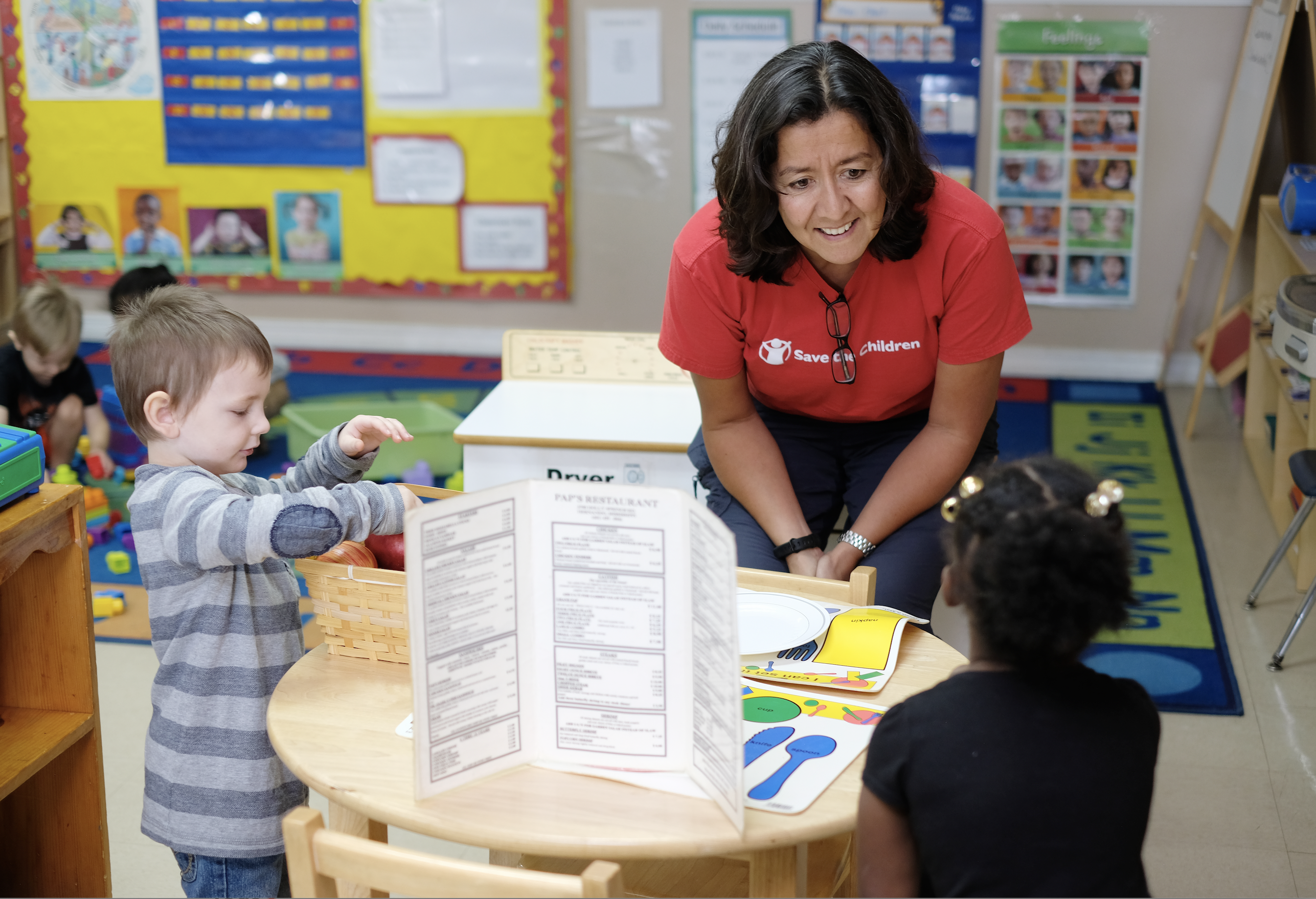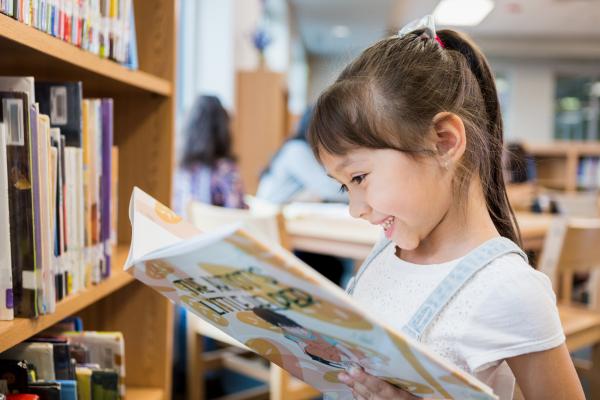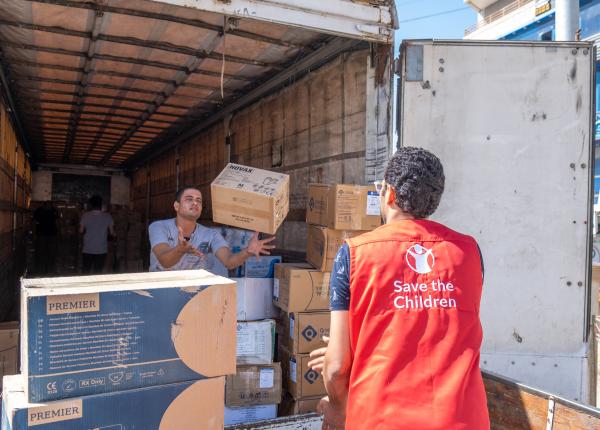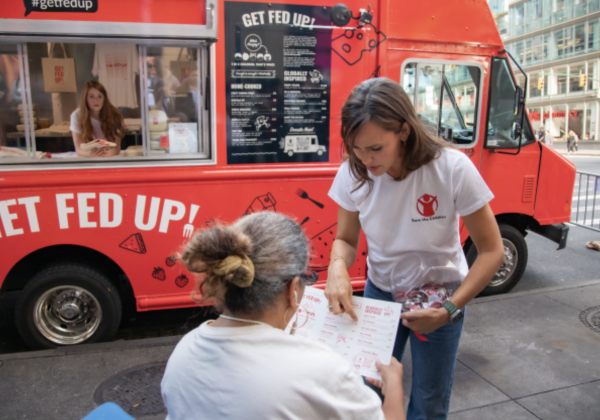KID REPORTERS’ NOTEBOOK
A Conversation with the CEO of Save the Children


Janti Soeripto, president and CEO of Save the Children US, visits with children at a Head Start program in Arkansas.
Save the Children is on a mission—to help the world’s most vulnerable children get a better start in life. Founded in 1919 in the United Kingdom, the global humanitarian organization operates in 116 countries.
The group focuses on kids’ well-being, especially their safety, health, and education. Members of Save the Children respond to natural disasters, wars, and conflicts around the world with food, water, medical supplies, and other resources.
For more than 30 years, Scholastic has partnered with Save the Children US to further their goal of fostering literacy nationwide. Last November, for example, Scholastic donated one million books to the organization, which will distribute them to schools and children in need across the United States.
To learn more about Save the Children US, I spoke with Janti Soeripto via video. Soeripto is president and chief executive officer of the U.S.-based group, which was founded in 1932. Below are highlights from my interview, which has been edited for length and clarity.

With help from Scholastic and other organizations, Save the Children expands access to books.
What inspired you to enter the field of humanitarian aid and children’s rights?
After I graduated from college, I went to work for a large company selling everyday goods. I did it for a long time, almost 20 years. At some point, I thought it would be great to do something that really matters, particularly for children who are less fortunate than some of us. I was lucky enough to meet people from Save the Children, and they asked me to come work for them.
Can you share a memorable success story that has directly impacted children’s lives?
I was in Afghanistan last year, which is a difficult country to grow up in, especially for girls [who are often banned from school]. We have managed to keep girls in elementary school and even in preschool. Sometimes, we have just girls in a class, and sometimes, it’s girls and boys together. In districts across the country, we have been able to teach hundreds of thousands of children. In a country where girls aren’t allowed to go to high school anymore, that’s a great success. We’re also training women to be teachers.
I’ll share another story from Indonesia, which is close to my heart because I’m half Indonesian. There, we’ve enabled a lot of children who were in orphanages to return to their families. Many children were put in orphanages after their parents were told that the kids would have a better life and access to education. Now, these children are back with their families, either their parents or their extended family. They can be in their communities and still go to school. It took a long time to convince people who were struggling economically that their children would be better off with them. I’m glad we were able to do that.

Nepal is a small country of 30 million people located in the Himalayas in South Asia.
What role do young people play in advocating for their own rights?
I remember the first trip I took for Save the Children 12 years ago. It was to Nepal, and we were in the schools, helping children. Those children were also working in factories, so we were trying to make their workplaces safer. We also gave them access to school outside of work. A young girl stood up and asked me, “When are children going to give me lessons?” She wanted to become more adept at working with technology and computers. It was such a great question.
Children often know what’s best for them, what’s most valuable. If you ask what’s important to them after an emergency, after an earthquake or a flood or during a war, a lot of children will say, “Of course we need food, water, and shelter. But we also want to go back to school. We want to be back with our classmates who want to play. We want to learn.” Years ago, adults didn’t think that was the most important thing. But children taught us. They told us what they wanted, what mattered. Now, providing education during global emergencies is a priority for Save the Children.

Save the Children staff members pack medical supplies in Egypt for people in neighboring Gaza.
How has Saved the Children addressed the humanitarian crisis for the children of Gaza?
That is a complicated situation, but it’s also simple. About one million children live in Gaza [a narrow strip of land bordering Israel]. That’s almost half of all the people who live there. So it’s a very young population. There’s a tremendous amount of destruction and a real lack of clean water, food, and medicine. [After October 7, when terrorists in Gaza killed more than 1,400 Israelis and took more than 200 people hostage, Israel waged a brutal war. Nearly 30,000 Gazans have been killed in the violence.]
There’s a shortage of doctors. The hospitals don’t work. When the bombs aren’t falling, and when there’s no shooting in the streets, we try to bring water and food to families in Gaza. Sometimes, we have to use donkeys because there’s no fuel for cars. So we use donkey carts, or our colleagues carry the supplies on their back. In some cases, we give people cash so that they can buy things in the market when food is available. And then we try to bring medicine to the hospitals. But it’s difficult. [Last December, a Save the Children staff member and his wife and children were killed by an airstrike in Gaza.]
You visited the region recently. Are all of the schools in Gaza closed, or are they being used as shelters?
Almost all of the schools are currently closed. A lot of the schools were destroyed. The remaining ones are essentially used as shelters. Many, many children there are trapped, and there’s heavy bombing happening in Gaza. We’re very concerned about children staying safe, but also having enough to eat, having clean water to drink, and having access to doctors and nurses when they need them.

Actress Jennifer Garner, an ambassador for Save the Children, visits a Save the Children food truck at a Philanthropy Summit in New York City.
Can you tell us about the partnership between Scholastic and Save the Children and some of the goals you’ve achieved?
We believe that all children should be able to have books at home and in school, and be able to read what they want. Scholastic is helping us with that. We’re helping children get access to books. We’re also helping children with reading. We have extra helpers in schools to read with children after school. We’re working with parents so that they understand how important it is to read with children. If they don’t have books in the home, which is still very common in the U.S., we help them get access to books. We even have book vending machines. If children do a reading test, and they’re ready for the next level, they earn a token for the vending machine, where they can pick out the book they’d like to read next.
What is Save the Children focusing on this year, and how can young people contribute to those efforts?
We’d love to start a youth council with students in high school and college. They would talk with our senior team and trustees about what’s important for children. We want to know their thoughts about a range of topics, including climate change, hunger, and the war in Gaza.
Since this is a big year for the presidential election and many state elections, we want to make sure people vote based on informed decisions about the candidates. How do the candidates feel about children's issues? How do they feel about hunger in America? What do they think about education in rural America and preschool education? When kids ask those questions, the politicians really show up. They want to be seen answering them. So we’re trying to get out the vote and make sure the candidates have good answers and good policies when it comes to children.
